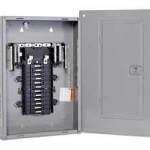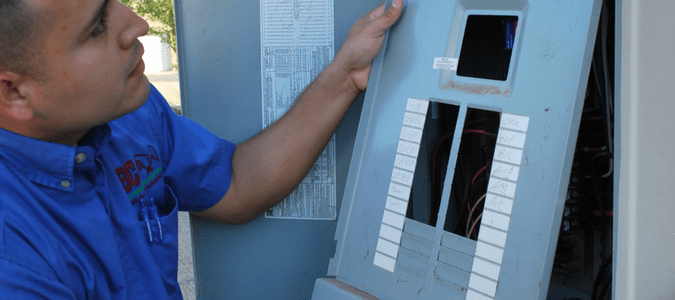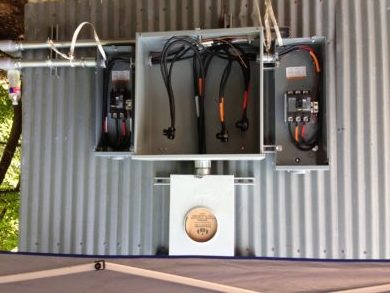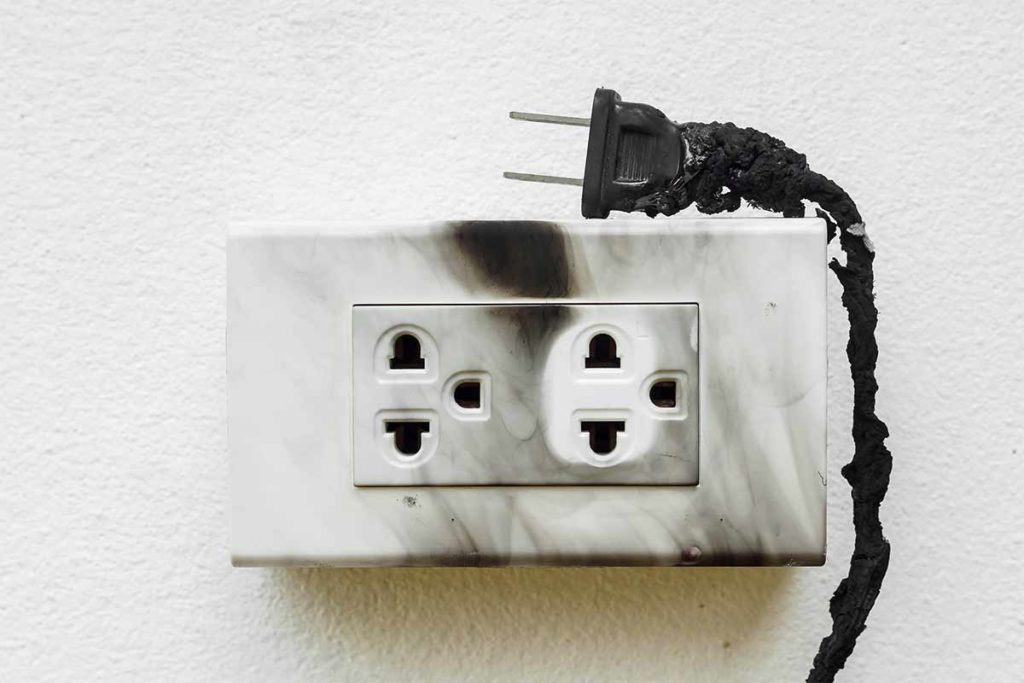Signs You Might Need an Electrical Panel Upgrade
The electrical panel is an essential component of your home’s electrical system. Within the panel are circuits, which carry electricity throughout your home to outlets, lights, and appliances. The number and size of the circuits determine your home’s electrical capacity.
The first step in the upgrade process is determining your home’s electrical load. Do you have enough amps to meet your electrical needs? If you think about electricity like water flowing through your home, an amp is the rate at which electricity flows. A few decades ago, 60 amps was enough to suit the needs of the average American household. Today, 100 amps is standard in the average home, with larger homes that use a lot of electricity needing 150 to 200 amps
Signs of Electrical Problems in Your Home
Be on the lookout for any of the following signs of a possible problem. If your home is experiencing any of these issues, call a professional to inspect your electrical system, because it might be time for an electrical panel upgrade.
Electrical shocks. Mild shocks and tingling can mean that the wiring is defective or that it was improperly installed. If this is the case, there’s a risk of ‘electrical leakage’ when you touch the switch or outlet.
Burning odors or sparks. The occasional spark is not unusual, but large or frequent sparks can be signs of deteriorated wiring or a faulty circuit. Also pay attention to warm or discolored outlets. Whether the cause is faulty wiring or an overloaded circuit, you’ll want to talk to an electrician about these issues.

How to Upgrade an Electric Meter and Panel to 200-Amp Service
Working inside an electrical panel is dangerous and is best left to a professional electrician.
Steps:
Ensure that power is off to the entire building, which may involve more than just shutting off the main breaker.
Have utility company to disconnect electrical cables from the house.
Remove the glass meter from the meter socket.
Unscrew meter socket from side of house, then use cable cutters to sever the cable connected to the socket.
Enlarge existing cable hole in wall using a cordless drill and 3-inch-diameter hole saw.
Bore through the rim joist using an extension shaft and 2-inch-diameter hole saw.
Attach a length of 200-amp SE electrical cable to the new meter socket.
Feed the SE cable through the hole in the wall and then screw the meter socket to the exterior of the house. Use a torpedo level to ensure the socket is level.
Install the new PVC weather head and conduit to the exterior wall, directly above the meter socket. Secure the conduit to the meter socket using PVC cement. Fasten the conduit to the house with U-shaped plastic clips.
Have the utility company mark the locations of any underground lines. Then, pound two copper ground rods into the ground using a 3-pound sledgehammer. Space the rods 6 feet apart.
Make the wire connections between the ground rods, up to an inter-system bonding termination, and into the meter socket.
Connect the power wires to the meter socket.
Plug the glass meter into the meter socket. Then, snap on the meter cover.
Working inside an electrical panel is dangerous and is best left to a professional electrician.
Steps:
Ensure that power is off to the entire building, which may involve more than just shutting off the main breaker.
Use diagonal-cutting pliers to sever all wires inside existing electrical panel.
Unscrew and remove old electrical panel from the wall.
Screw a large ¾-inch-thick plywood panel to the wall for mounting the new electrical panel.
Feed the SE cable through the top of the new electrical panel, then screw the panel to the plywood. Use a torpedo level to ensure the panel is level.
Make all the electrical connections inside the electrical panel.
Feed the house circuits into the panel, making sure each cable passes through a cable connector.
Connect the bare-copper ground wires and white-insulated wires to the ground and neutral bar inside the panel.
Plug new circuit breakers into the bus bar.
Run the main ground wire from the bottom of the electrical panel to the copper water main.
Have the utility company reconnect the electrical cables to the exterior of the house.
Label each breaker with the correct house circuit.

HOW TO CHOOSE A NEW ELECTRICAL BREAKER PANEL FOR YOUR HOME
The electrical breaker panel is a large metal box attached to the outside of your home near your electric utility meter. It acts as the main component for the flow of electricity supplied to your home from the utility company, and every home with utility-supplied electricity has some form of one.
HOW IT WORKS:
As the electricity is fed to your house from the utility company, it passes through the meter, through the supply system, then through your breaker box. As the electric lines enter the box, they are then broken into subsidiary circuits that are connected to fuses. The fuses help to protect your home from overloads.
CHOOSING THE RIGHT BREAKER PANEL:
Not all breaker panels are created equal. Depending on the size of your home, the amount of electricity you need per room, the number of large appliances you will be running, and any additions you may add on in the future, picking the right replacement is important.
Amperage – Determine the amperage capacity of your home. Consider this: A home with 200-amp (ampere) capacity can run multiple large appliances at the same time with no problem; whereas 100 amps or less would just barely enable you to run a hot water heater, a stove, and a hair dryer at once. Most homes these days are built with a 125-amp minimum, depending on square footage and other factors.
Breakers – You will need to know how many circuit breakers you will require in your new panel. Base it simply on your needs. Keep in mind that a circuit breaker is designed to bear only 80% of its rated capacity (ex. A 20-amp breaker is rated to bear a 16-amp load before kicking); this is a standard safety feature to prevent potential overloads. Locate the loads for each device/appliance (usually somewhere on the device itself or in the manual), and if amps are not stated, use this math formula to help you determine what you need

Should I Upgrade My Electrical Panel?
Owning a home has many benefits. Unfortunately, one of the disadvantages is that things break. Sometimes, you have no clue why something isn’t working. Diagnosing the problem is only half the battle. When it comes to electrical issues, most homeowners have little idea what exactly the problem is, much less how to fix it.
What Is a Breaker Panel?
Before we discuss how and why your electrical panel might not be working, let’s talk about the breaker panel itself. An electrical panel is the central point that connects the wires from outside to the wires inside your home and how your electric service provider provides electricity to your home. It’s often also called the main breaker box, the fuse box, a distribution panel, a load center and even a breaker panel. This is where you go when you need to flip the breakers off and on to get the power back on when you’ve tripped the breaker. It is usually located in the garage, on your home’s exterior or in a utility room, but can be anywhere in your home.
MAIN BREAKER PANELS
These panels have a main built-in breaker that can shut off all the power to your property. This double-pole circuit breaker both identifies the capacity of your panel’s circuits and protects those circuits from becoming overloaded.
MAIN LUG PANELS
Instead of having a main breaker, line wires go to lugs in these types of panels. Main lug panels have a separate shut-off system, which could be near the meter or connected to the main panel’s breaker. Having a disconnect near your meter allows firefighters to cut your power without needing to enter your living structure
TRANSFER SWITCHES
If you need more than one circuit in a particular area, such as in a greenhouse or a workshop, you may want a sub-panel. Sub-panels typically don’t have their own disconnect and are generally powered from the main panel.

Does your home need a breaker panel upgrade?
Your home’s breaker panel, or also known as the fuse box, fuse panel or breaker box, is the central control of the entire electrical system for your home. It distributes the electricity delivered by your electric provider and powers everything in your home. Power to your home is turned on and off by circuit breakers to protect wiring from damage by “tripping” when an electrical short or over-current occurs
With the arrival of so many new electronic devices over the last 8-10 years, many home electrical systems do not have the capacity to support today’s high powered devices on top of the core circuits they were originally designed to support.
Now is the time to upgrade your home’s circuitry to ensure that your home has the capacity to support your electrical needs without the risk of a fire. You may consider replacing your electrical panel or adding a sub-panel. It’s important to note that a new breaker panel will not provide additional power to your home. To achieve additional power, Amps & Volts Electric Inc., has a process that includes a new breaker panel as well as other accessories, such as new cables and a new electrical meter.
A typical breaker panel consists of these primary components:
The main breaker is a large double pole circuit breaker that limits the amount of electricity coming in from outside to protect the circuits it feeds. It also identifies your breaker panel’s amperage capacity.
Circuit breakers are stacked in the panel and have an ON/OFF switch that controls the flow of power.
Bus bars receive power from the two thick black wires that bring power in from the electrical meter. The bus bars in turn carry power through the circuit breakers to the circuits.
Neutral bus bars connect to the main circuit’s neutral wire. The neutral bar provides the contact point for the white wires that return electricity back to the breaker panel after flowing through the black wires to power a device.
Grounding bus bars unite all the grounding wires from the breaker panel’s various circuits and connect them to the ground bar.
Main Breaker Panels
Main breaker panels have a built-in main breaker which can be used to shut off all power to your residence. A main breaker is a large double-pole circuit breaker that limits the amount of electricity coming in from outside to protect the circuits it feeds. It also identifies your breaker panel’s amperage capacity. Main breakers can be installed when the meter and feeder cable are within 10 ft. of the panel.